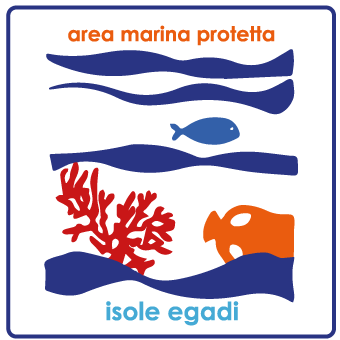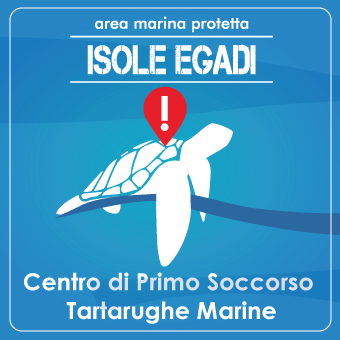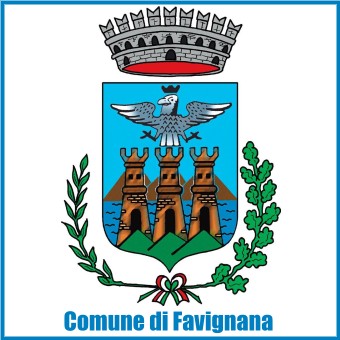The island of Marettimo is located in a strategic point of the Mediterranean, where many civilizations have passed from. Some have left obvious traces, others instead wait to be discovered. It is the highest island full of vegetation of the Egadi archipelago in the province of Trapani.
Polybius calls her in Greek He will nèsos, the sacred island, while in’Antonini itinerary of the third century AD. The island appears with the name of Shadow, transformed into Malitimah by the Arabs. Right at the gates of the Sicilian channel, And “The first Mount Sicily " According to the 13th century chronicler Bartolomeo as a neocyle.
Has an area of 12,3 kmq and a coastal perimeter of about 19 km that draws a rhomboid form. E’ a little more than 2,5 km from Punta San Simone to Punta Libeccio and about long 7,5 Kinging a push mugny the tip, oriented along a North-West/South-East director. From the Trapani coast it is 20 nautical miles (circa 37 km), By Favignana 13,5 (circa 25 km) And from Capo Bon in Tunisia 70 (circa 130 km).
He separated from the mainland first compared to the other islands of Sicily, circa 600.000 Years ago, and this very long insularity determined characteristics of extraordinary importance: a flora and a fauna that have maintained unique peculiarities over time. If to this is added a wealth of water sources it can be understood how all this has contributed to keeping this rich natural heritage up to the present day .
In 241 A.C.. The sea of the Egadi was the scenario of the First Punic War. According to some sources The armistice between Romans and Carthaginians was signed in the same Marèttimo, which thus remarked an ancient vocation to the sacredness and truce between different peoples.
After the First Punic war the Romans, in 150 A.C.. A military garrison built on the island that controlled the route between Capo Bon in Tunisia and Rome. The monumental complex known as "Romanian houses", and built in opus quasi reticulatum. In the same area there is a fascinating rural church of the Norman era (XI-XIIL century) built by the Basilian monks, Greek language. It is assumed that the church was dedicated to San Simone.
The Castle of Punta Troia
The construction of a sighting tower on the Punta Trota promontory is probably probably from the Saracen period.
During the Arab domination the island was called Gazirat malitimah.
around 1140 Ruggero II, King of Sicily, transformed the old Saracen tower of Punta Troia into a real castle to garrison the western end of the richest and most powerful Kingdom of the Mediterranean of that period.
In subsequent periods Swabian domination, Angioina and Aragonese Marettimo follow the fate of Sicily, accentuating an isolation that had its peak during the long Spanish rule, when the western part of the island became a receptacle for pirates and privateers of all the reams, with a prevalence of those Saracens. The few inhabitants were forced to live in caves and the only true garrison of central power was made up of the castle and its increasingly small garrison.
In 1637 the Spanish Crown, bankrupt the continuing wars, He gave the Egadi archipelago to the Marquis Pallavicino of Genoa. In 1651, off between Marettimo and Levanzo, back northeast, He was found a large coral bench, and the island was home to the boats of coral Trapani, who spent the night at Scalo Maestro, under the protection of the garrison of Punta Troia Castle. It was in the late eighteenth century that the island began to be populated on a permanent basis. At that time, King Ferdinand IV of Bourbon, pushed by the enlightened viceroy Caracciolo, He began timid attempts at government reform and enhancement of the kingdom territories. With the French Revolution, Under the viceroy Caramanico, the "Real Castello del Maretimo" He became horrid prison, especially for political prisoners: in 1793, in times of anti-Jacobin repression and famine, Castle had well 52 political prisoners, Paranted in a prison obtained in an old tank called “The pit”.
The prison conditions were described in his memoirs from Guglielmo Pepe, Here penned by 1802 al 1803. Since September 1822 to June 1825 the Marettimo pit housed the Marche Sant'Angelo in Pontano Nicola Antonio Angeletti, Carbonaro opponent of the Kingdom of Naples, who left us a detailed plant by himself designed on how the fort of Marèttimo was organized. In the pit they were also locked up the Foggia Nicola Ricciardi; the painter Syracuse, but Neapolitan source, Antonio Leipnecher; and Gennaro Ed. And then the Neapolitan Ferdinand Giannone, Carmine Curzio, the Palermo Bartolomeo Milone, the priest don Pasquale Barbieri and the archpriest Vincenzo Guglielmi (or William) Andretta, in the province of Avellino, slain into the pit along with the lawyer Nicolò Tucci “for a play badly interpreted by the military guard”.
In 1844 re Ferdinand the, after having inspected, He abolished the Castle. Together fell into disrepair the nearby church dedicated to St. Anne and the chapel dedicated to Our Lady. delle Grazie, one place up to that point where they could receive the sacraments Marettimo. In the mid -nineteenth century the inhabitants of Marèttimo left the caves and began to build their tuff houses.
I Florio, with their initiatives, They were doing flourish Egadi with traps and fields of cultivation, But for Marèttimo this was not enough: conditions and peculiar communities were such that she began, unrestrainable, the migratory flow “this way and that by the Sea” to North Africa, Portugal and, subsequently, the Americas up to the icy waters of Alaska for salmon fishing.
Today the town is enclosed in a single agglomeration no longer 300 meters wide 200. Residents live mostly of tourism, but in the not too distant past, most of the population was made up of very valid sea-faring, experts and salting fish, not last, like good farmers and beekeepers.
Historical news by C.S.R.T Association. “Marettimo”
Photo © Giorgio De Simone
The Punta Troia Castle, owned by the Municipality of Favignana Egadi Islands, Today it is home to the prisons museum and observatory of the “Monk seal” Marine Protected. Travel Destinations to visit for enjoying the natural scenery. In 2023 One of the rostrums of the Battle of the Egadi was transferred from Favignana today visible to a castle in the castle.
Timetable 2025:
From Tuesday to Sunday:
from 10:00 all 15:00, last access 14:20
Closed Monday
Ticket: 5 euro































